Booth S11215
Updated 7/17/2025
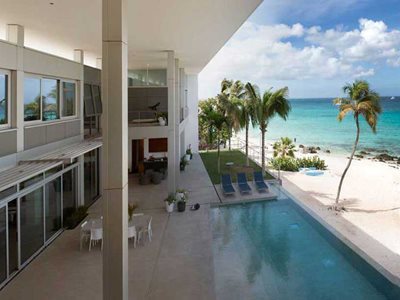
Cool concrete isn't just neat. It's literally cool! Who hasn't had the experience of sprinting over a scorching hot concrete pool deck? Concrete heats up a lot when exposed to heat and sunlight. This makes it very unpleasant to touch or be around. It also contributes to various environmental problems. In this article, we will talk about how and why to make cool concrete.
The reasons behind this are well studied and documented by organizations and engineers around the world. Here are the key factors:
It is not uncommon for high heat, high sun regions to see concrete achieve surface temperatures approaching 150 degrees Fahrenheit. To make matters worse, concrete retains heat very well. It can remain very hot for hours after ambient temperatures start to decline.
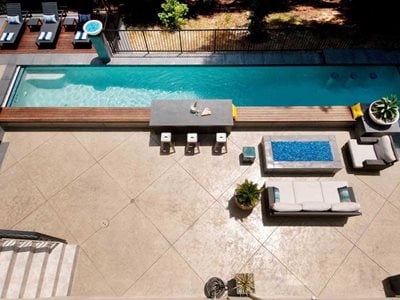
Hot concrete causes discomfort. When concrete gets too hot, sitting or walking barefoot on it can cause pain. This is especially a problem on pool decks, backyard patios, and wherever pets may walk. At the highest common temperatures, concrete can also cause mild burns!
Hot concrete is also one of the biggest contributors to the heat island effect. Heat island is where local temperatures are increased by man-made activities and structures. This biggest cause of heat island is the heat stored and radiated from building and pavement materials like concrete. Heat island has a long list of health and environmental affects in addition to the simple discomfort of warmer temperatures.
Changing color is the easiest way to make cool concrete. Concrete with a light color will reflect more sunlight and absorb less heat. This effect is measured using a figure called Solar Reflectance Index (SRI). This number is determined by the standards found in ASTM E1980-24. The higher the number the more solar energy is reflected.
New gray concrete usually has an SRI value of 35, while asphalt can have an SRI value as low as 0. SRI values can be found for selected colors on the color card for your chosen Solomon Colors or Brickform integral color. By using one of these SRI rated colors, your concrete will be cooler to the touch and contribute less to the heat island effect. LEED credits can be earned for achieving a minimum SRI value on different applications.
💡 Did You Know? The higher the SRI, the cooler the slab. Bumping SRI from 35 (standard gray) to the mid-50s (Shell, SRI 56) typically keeps a slab about 10–25°F cooler under peak summer sun.
There are a few ways to lighten the color of concrete, cooling the surface. For new concrete, you can use integral colors or a dry shake color hardener. Color hardeners can create more vivid, brighter colors. With Color Hardener, you can make white concrete without the hassle or expense of using white cement or sourcing light colored sands. However, Color Hardeners require more labor and they can't readily be used to color vertical surfaces, so they are mostly relegated to specialty pavement and residential use. Integral colors are more versatile as they can be used in almost any concrete application. Integral colors are also more likely to be given an SRI value.
Existing concrete can be given these same characteristics using an overlay or opaque coloring product that have been given a light color. This is a great option for restoration projects.
Here are a couple effective options from our Brickform line of decorative products:
Need in-depth guidance on how to change the color of your concrete?
Read the full how-to guide on the Brickform blog
In addition to smart color choices, you can layer on these quick cooling upgrades for even more comfort:
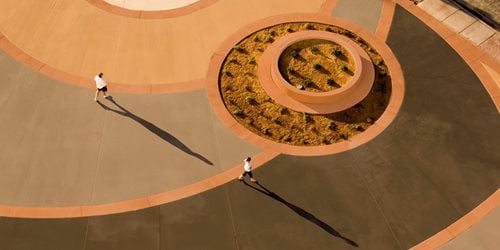
Everything you need to know about adding color to concrete—from selection to installation and maintenance
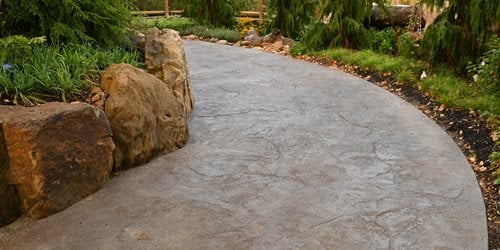
Find out how to choose the right stamped concrete color for any job
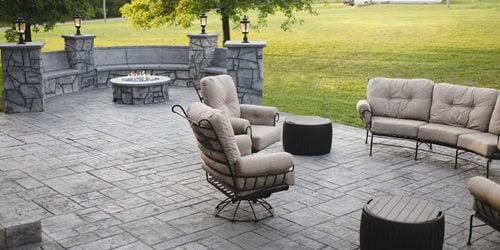
Gray stamped concrete is under-appreciated. With all the colors possible, sometimes gray is the most versatile.
Explore impressive concrete installations to find inspiration for your next project.
Find out how much color and fiber you'll need for any size project.